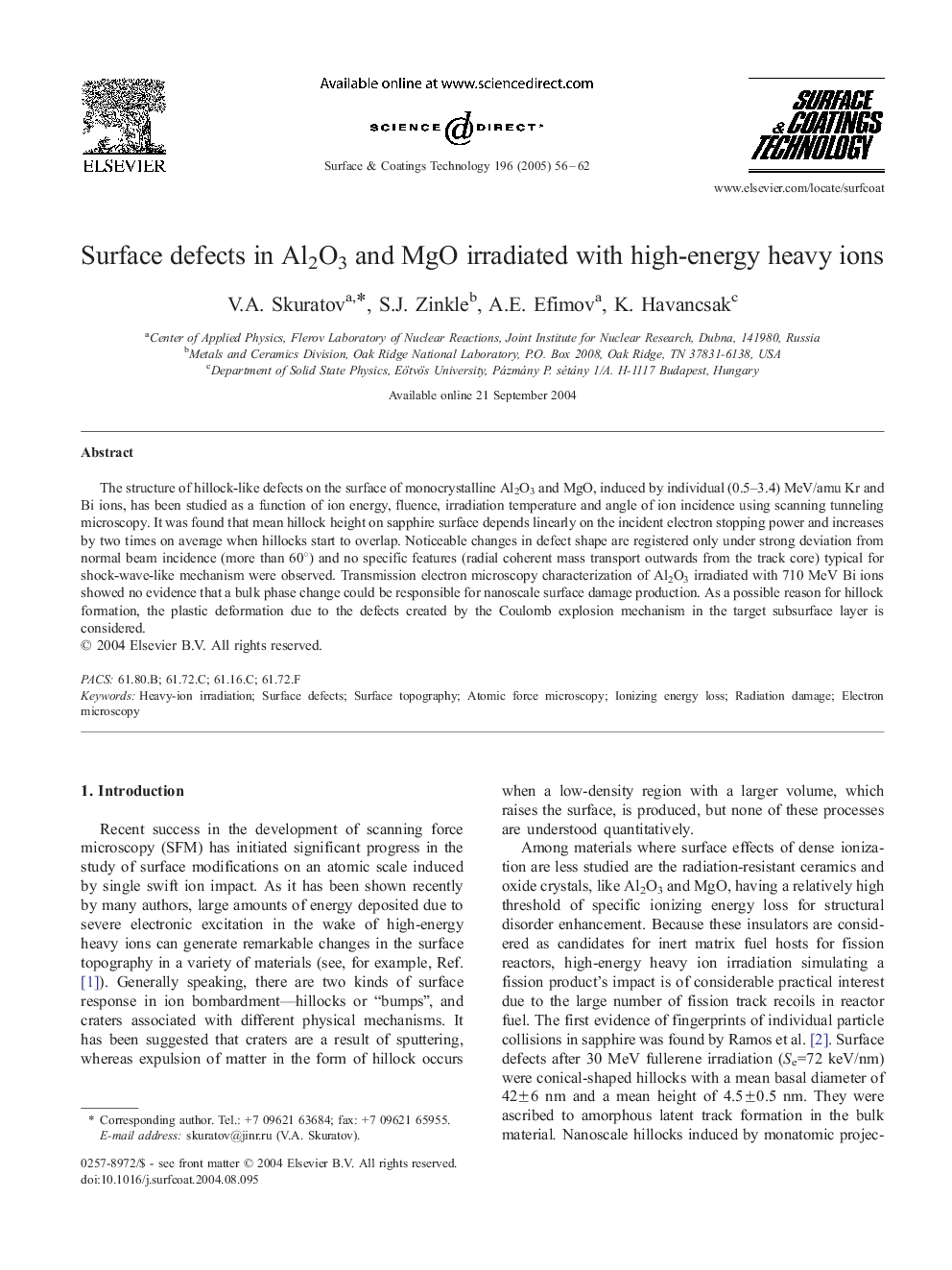| Article ID | Journal | Published Year | Pages | File Type |
|---|---|---|---|---|
| 9809666 | Surface and Coatings Technology | 2005 | 7 Pages |
Abstract
The structure of hillock-like defects on the surface of monocrystalline Al2O3 and MgO, induced by individual (0.5-3.4) MeV/amu Kr and Bi ions, has been studied as a function of ion energy, fluence, irradiation temperature and angle of ion incidence using scanning tunneling microscopy. It was found that mean hillock height on sapphire surface depends linearly on the incident electron stopping power and increases by two times on average when hillocks start to overlap. Noticeable changes in defect shape are registered only under strong deviation from normal beam incidence (more than 60°) and no specific features (radial coherent mass transport outwards from the track core) typical for shock-wave-like mechanism were observed. Transmission electron microscopy characterization of Al2O3 irradiated with 710 MeV Bi ions showed no evidence that a bulk phase change could be responsible for nanoscale surface damage production. As a possible reason for hillock formation, the plastic deformation due to the defects created by the Coulomb explosion mechanism in the target subsurface layer is considered.
Keywords
Related Topics
Physical Sciences and Engineering
Materials Science
Nanotechnology
Authors
V.A. Skuratov, S.J. Zinkle, A.E. Efimov, K. Havancsak,
